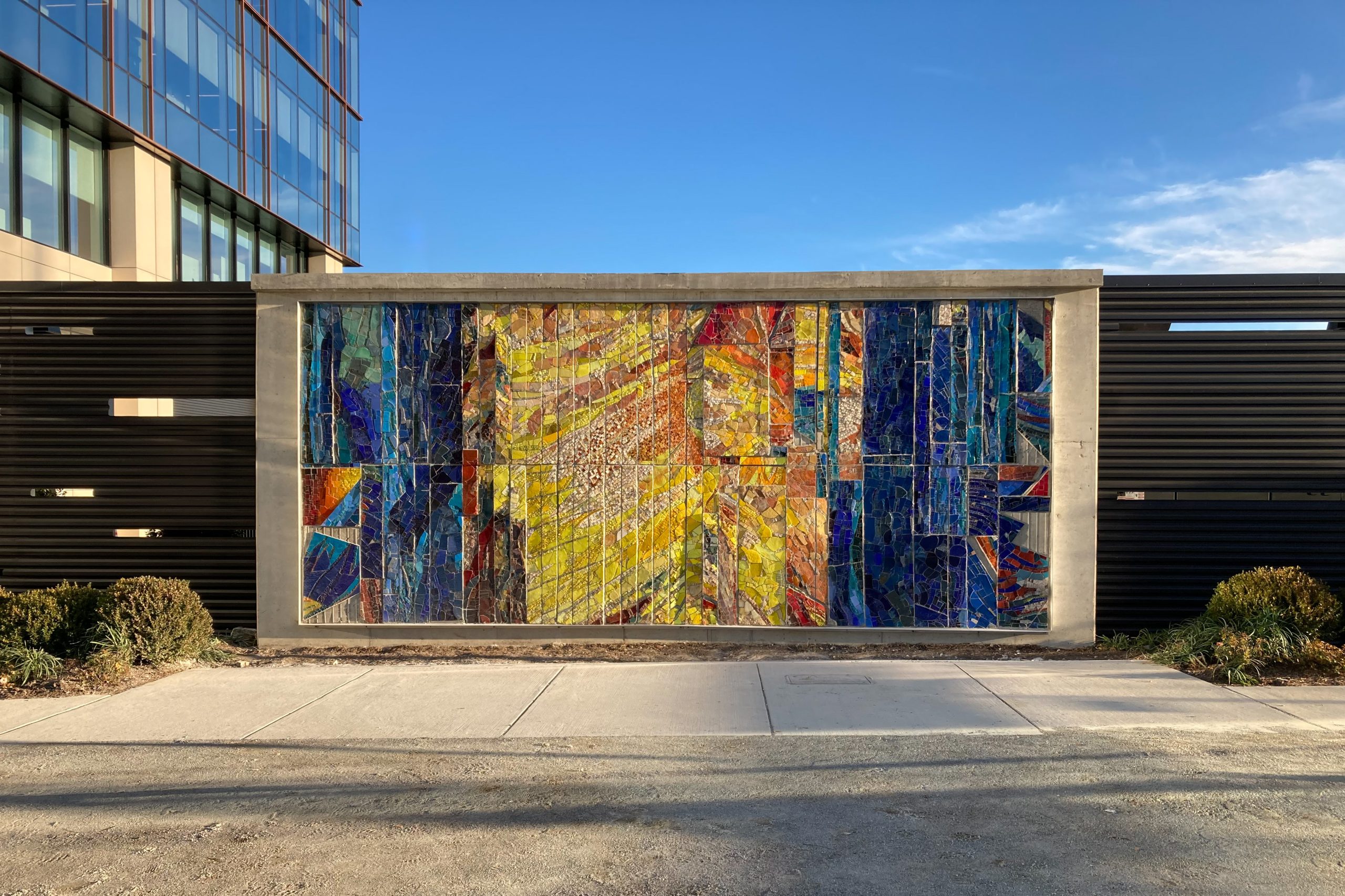
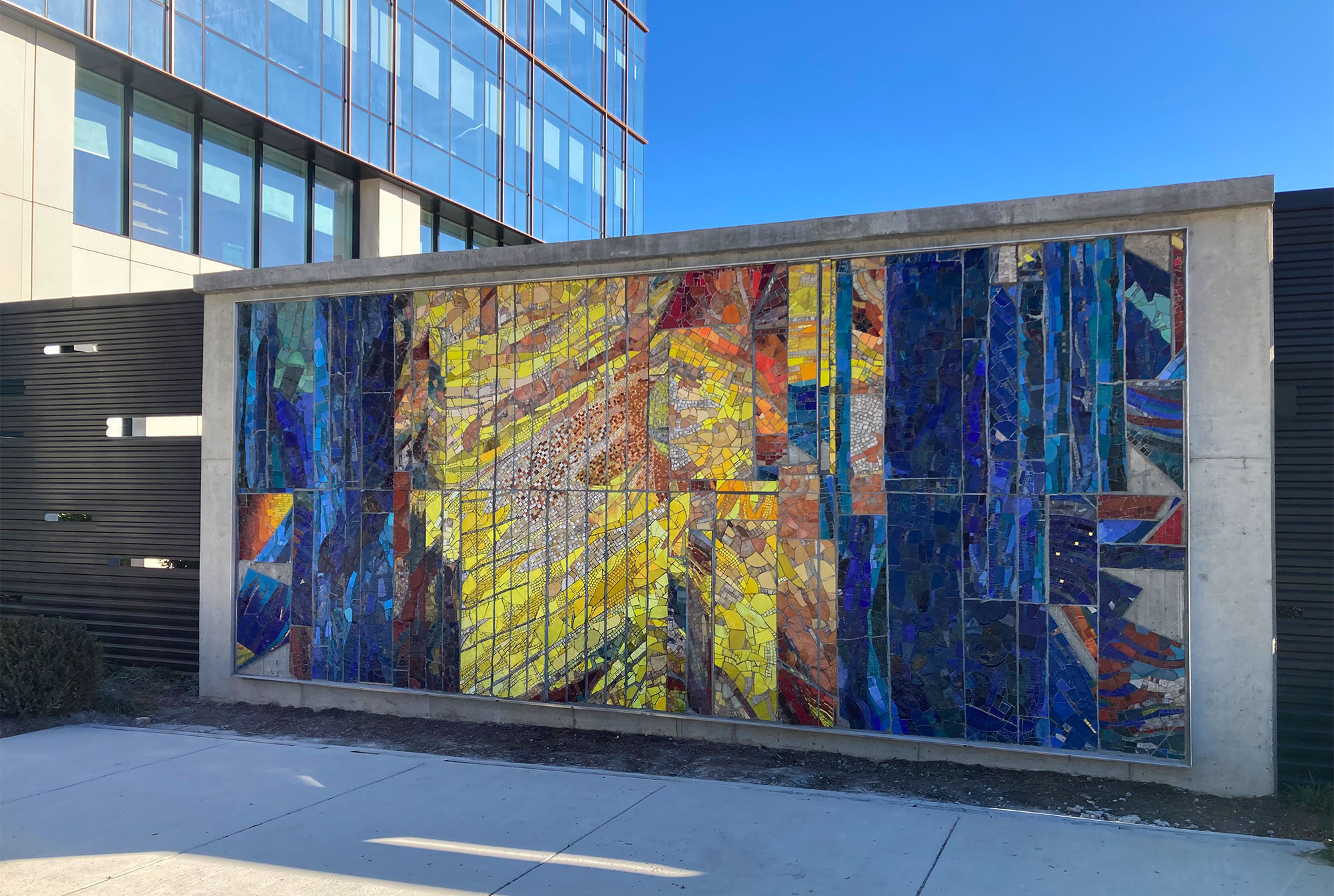
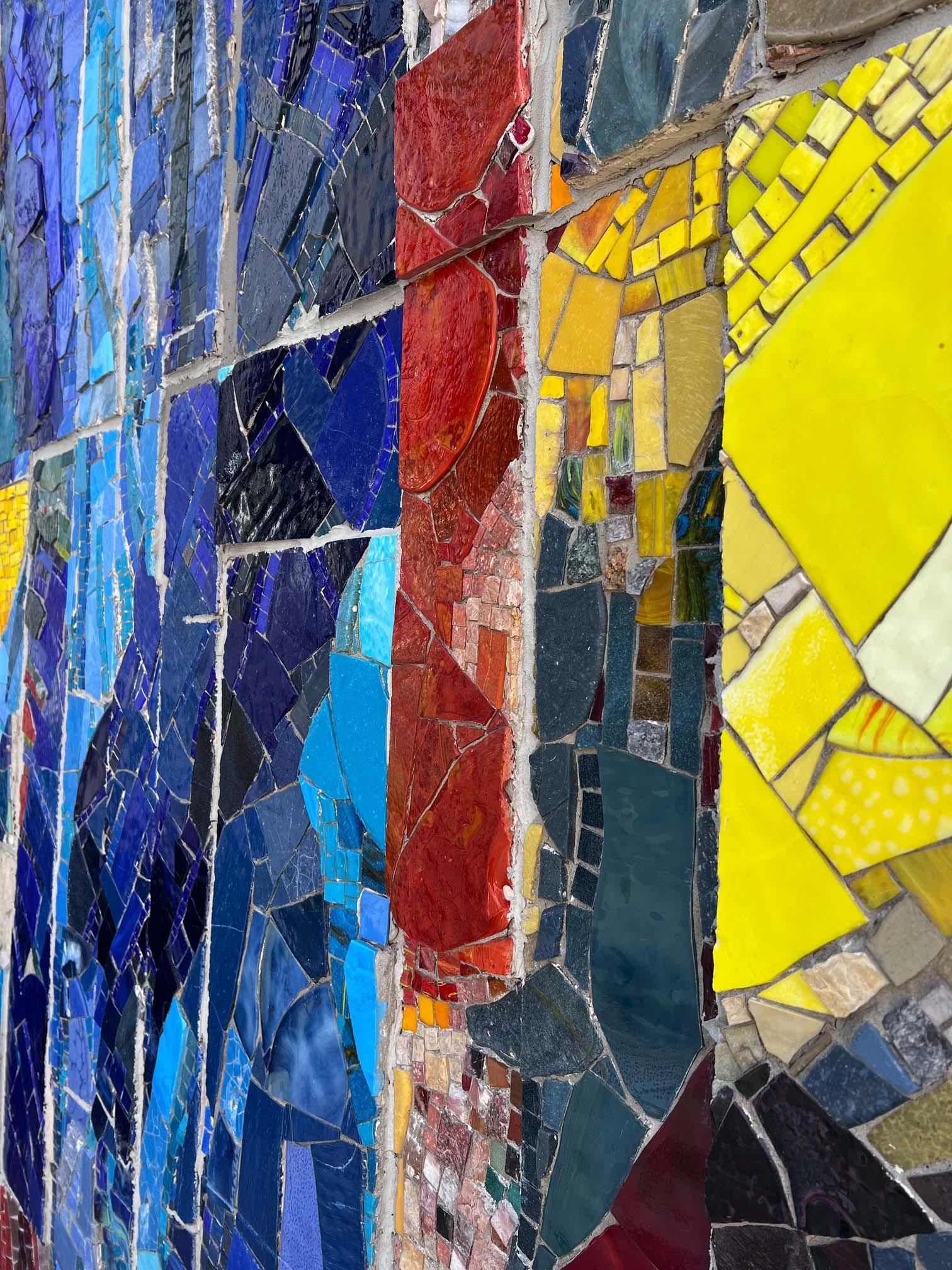

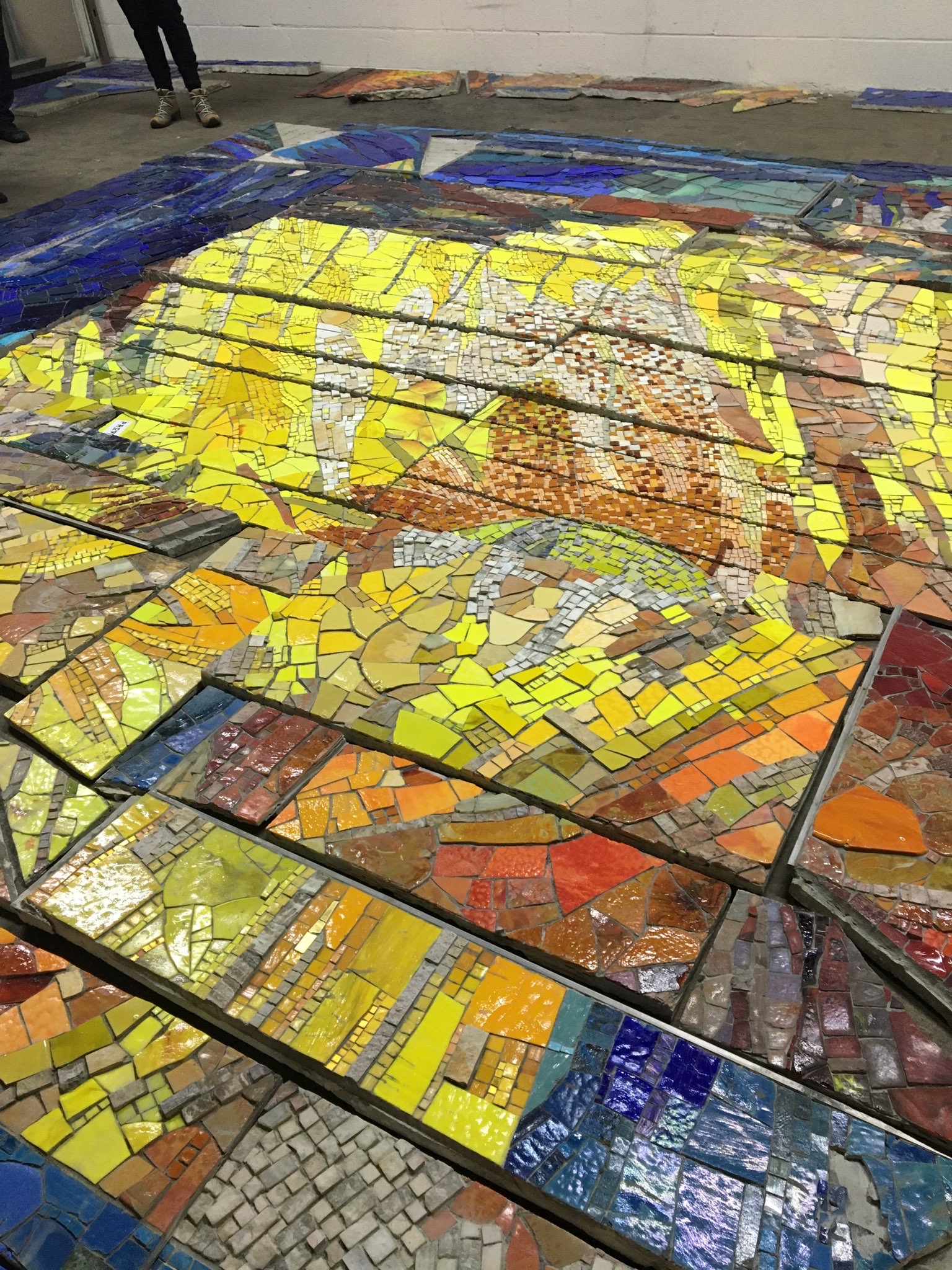
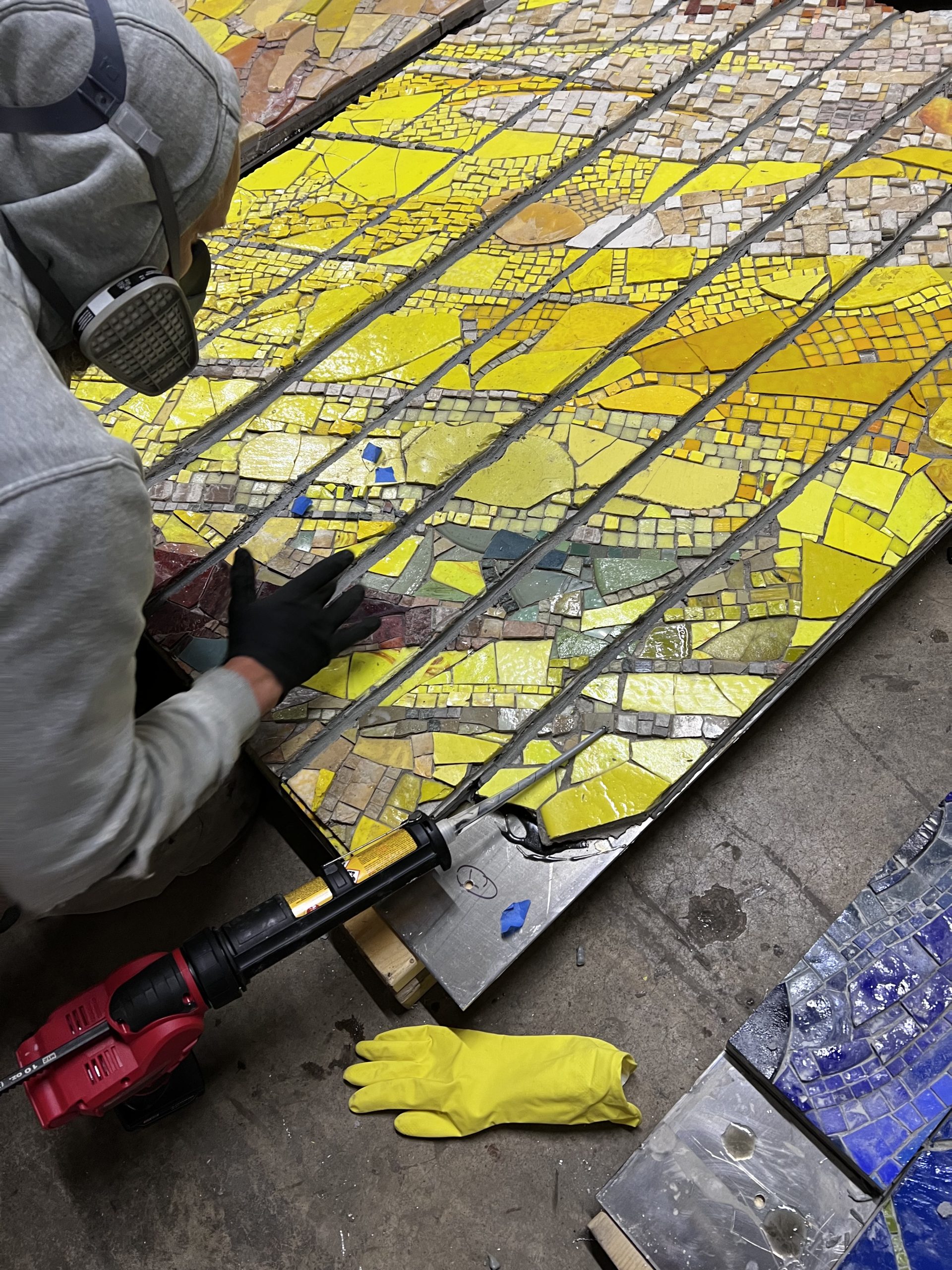
Client: Washington Metropolitan Area Transit Authority (WMATA)
Location: Hyattsville, MD, United States
Completion date: 2022
Project Team
Artist
Heidi Lippman
Artist Project Manager
Ben Gage
Ben Gage Fine Arts Specialists
Program Manager
Laurent Odde
WMATA Art in Transit Program
Project Coordinator
Anne Delaney
WMATA Art in Transit Program
CEO and Chief Curator - PGAHC
Rhonda Dallas
Prince George's Arts and Humanities Council (PGAHC)
Development Manager - Developer
Gabrielle Kornely
Urban Atlantic
Principal Conservator
Christina Varvi
RLA Conservation Inc.
Overview
"Dawn and Dusk Resurgent" by Heidi Lippman is a recomposed artwork that pays homage to "Dawn and Dusk" (1998) created by Ms. Lippman for the parking garage at the New Carrollton metro station. The original installation, commissioned by Prince George’s County, Maryland, was described by art critic Ben Forgey of The Washington Post as "a little daily miracle," that encircled the main stairwell towers of the award-winning parking garage. Prior to the demolition of the parking garage in 2022, large slab sections of the original mosaic were retrieved and reconfigured to create the new, vibrant installation in the public plaza adjacent to the Metro Building. "Dawn and Dusk Resurgent" is a mosaic mural that measures 23’x’10’ and is composed of hand cast and manufactured glass and stone originally used for the creation of “Dawn and Dusk”. Inspired by the natural cycle of light, the artwork is the first in the Washington Metropolitan Area Transit Authority (WMATA) Art in Transit collection created by conserving and adapting elements of an existing piece. It is an example of sustainability through the use of collected, salvaged, and upcycled material and adaptive creative process.Goals
“Dawn and Dusk Resurgent” was created to fulfil several goals including salvaging sections of an existing artwork condemned to be destroyed, creating a new piece that would engage Metro staff, customers, and the community, and activate a public space. Art in Transit and its partners (the artist, Prince George's Arts and Humanities Council (PGAHC), RLA Conservation, and Ben Gage Fine Arts Specialists) worked to develop solutions inspired by sustainable practices through the preservation and reuse of an existing artwork. By conserving elements of the original mosaic, the renewed artwork provides an antidote to the intensity of modern commuting lifestyle. The preserved, intricate details of the mosaic were chosen for their enduring color and permanence while providing a continued reference to day and night. “Dawn and Dusk Resurgent” demonstrates the artist’s flexibility and openness to adapt her creative process. The artist and her team adapted the reconstructed artwork to the conditions of the new site. Through its site specificity and creative practices, “Dawn and Dusk Resurgent” captures the essence of sustainability in public art.
Process
Faced with the planned demolition of the station’s parking garage which was adorned with Heidi Lippman's “Dawn and Dusk” mosaic (1998), WMATA’s Art in Transit, the Prince George’s Arts and Humanities Council (PGAHC), and the artist agreed to work together towards saving at least portions of the artwork. Art in Transit and PGAHC agreed on a partnership that included funding through WMATA’s Office Relocation Program in association with Urban Atlantic (the building site developer), and through the PGAHC, as well as two Maryland State Arts Council Conservation Grants awarded to PGAHC.
RLA Conservation and Ben Gage Fine Arts Specialists were hired to assess the feasibility of such an endeavor which resulted in the removal of large mosaic slabs to be reused for the creation of a new artwork. This complex process included the following steps: identifying appropriate sections to salvage, wet sawing the selected sections of the mosaic, crating and transporting the salvaged sections to the artist’s studio, creating a new composition, building a unique setting for the artwork, devising site-specific installation processes that include possible removal options ensuring that the new mural can survive any future alteration to the site.
Additional Information
Each of the 120 salvaged pieces are attached to 12 metal plates. They vary in weight and thickness due to the challenging removal conditions at the original artwork site. However, the artist took advantage of these irregularities to introduce further dimensionality that allows for a complex play of lights and shadows on the surface of the mosaic. Additionally, some of these elements include ridges from the pre-cast forms of the concrete, thus preserving the connection to the artwork’s origin. The artwork is the focal point of the office building public plaza and its landscaping echo the prominent colors of the mosaic and the nearby metro line with the introduction of Muscari flowers and daylilies. The entire project echoes a positive team spirit required for a successful outcome when multiple stakeholders are engaged. Community support was paramount as well as accessing both public and private sector funding. The Maryland State Arts Council, through their Public Art Conservation Grant Program, provided pivotal project funding necessary for planning, documentation, and artist commissioning.